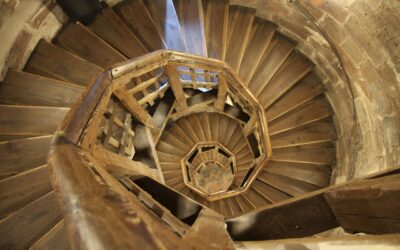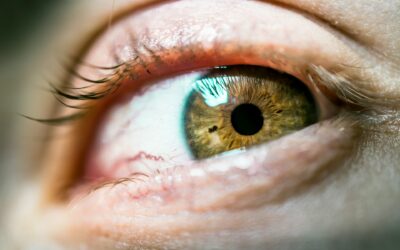Angle closure, or acute angle closure, is a condition that occurs within the front of the eye. The corneoscleral angle is responsible for draining all of the fluid from the front of the eye. In able closure, this drainage system closes off and becomes impassable. When this occurs, the eye pressure will increase greatly and can cause numerous symptoms. Treating angle closure should be done emergently to preserve vision and relieve the symptoms associated with angle closure. If angle closure persists, it can cause angle closure glaucoma which will result in vision loss and permanent damage.
The Corneoscleral Angle
The front of the eye is filled with a fluid called aqueous humor.
Aqueous is produced behind the iris and flows through the pupil into the anterior chamber between the iris and the cornea.
When this fluid drains, it exits through the trabecular meshwork which is located within the corneoscleral angle.
The corneoscleral angle is the meeting of the cornea and the sclera at the edge of the cornea around the eye.
This location can only be visualized using a special technique known as gonioscopy in an eye exam.
Symptoms of Angle Closure
If acute angle closure occurs, there will be several notable symptoms.
The eye involved will be very red and appear inflamed. It will also be severely painful to the point of causing nausea and vomiting.
Often, patients with acute angle closure will also describe an intense headache when the angle closure occurs.
Additionally, there may be blurred vision in the eye with the acute angle closure.
Eye Pressure with Angle Closure
When there is an acute angle closure, the eye pressure on that eye will increase dramatically in a very short time.
Since no fluid can leave the eye, it becomes trapped and increases the press within the eye.
As a result, glaucoma-type changes can occur rapidly if the eye pressure remains high.
The optic nerve and retinal nerve fiber layer can both be damaged from high eye pressure with angle closure.
In many cases, the eye pressure will rise above 50 mmHg, while the normal range is between 10-20 mmHg.
If the eye pressure is increased due to an angle-closure attack and damage occurs to the eye, angle-closure glaucoma can be diagnosed.
Treating Angle Closure and Angle Closure Glaucoma
The treatment for acute angle closure attacks involves lowering the eye pressure in the doctor’s office as well as prescribing medication to continue to lower the eye pressure.
In the office, eye drops or oral medication may be used to lower the eye pressure to a stable level.
These medications may then be prescribed to use daily to continue to maintain a lower, normal eye pressure.
Once the acute phase of the angle closure is resolved, the eye pressure is lowered, and the eye is no longer inflamed, a laser procedure can be done to open a small hole within the iris to allow fluid to escape in the event of a recurrence.
Additionally, this laser procedure can be done in the other eye to prevent an angle closure attack in that eye as well.
Our eye doctors at Eye Theory in Houston, TX excel in the prescription of contact lenses, glasses and various eye diseases. Call our optometrist at 832.831.7386 or schedule an appointment online if you would like to learn more about angle closure. Our eye doctor, Dr. Jonathan Tsao, provides the highest quality optometry services and eye exams in the Midtown, Downtown, Museum District, Montrose, East Downtown, and Southside Commons (Southside Place) vicinities of Houston, Texas as well as our newest location in the Stone Oaks neighborhood of San Antonio, Texas.





